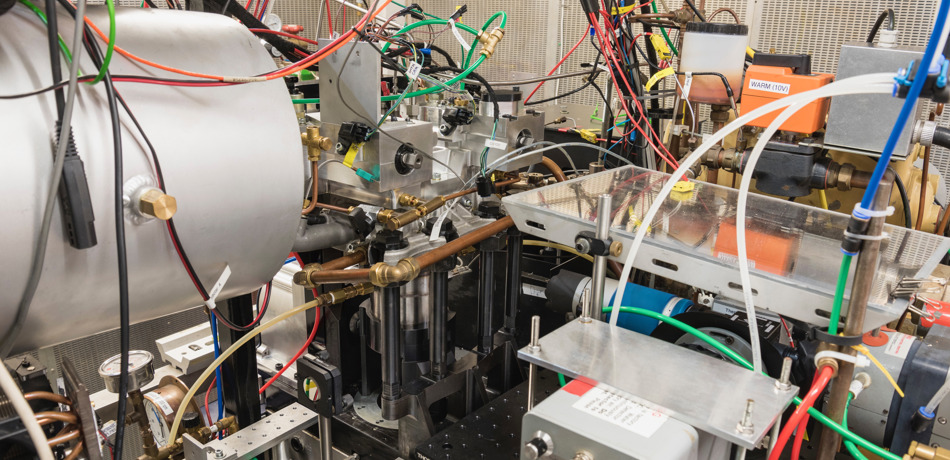Thermal Propulsion Systems Research, Department of Engineering Science, University of Oxford - Novel Optical Diagnostic Methods for Temperature and Species
Novel Optical Diagnostic Methods for Temperature and Species
For over a century in the history of internal combustion engines, two concepts have played a dominant role during the process of development and production. The spark ignition or gasoline engine shows the distinctive feature of high specific power and large speed range due to its good level of air utilisation; whilst the compression ignition or Diesel engine, offers better thermal efficiency from the use of a higher compression ratio, and the absence of throttling. Combining the positive aspects of these two engine types has always been a goal of engine research and development in the automobile industry, and Gasoline Direct Injection (GDI) Spark Ignition engine is seen as one of the most promising ways to achieve this aim.
The following aspects of GDI engine operation are currently being investigated at Oxford:
· Effect of Fuel Composition on Volumetric Efficiency and Compression Temperature
· Mie Scattering imaging of fuel injection and droplet distribution
· The effect of in-cylinder flow fields on mixture formation
A new GDI optical engine has been installed at Oxford. The combustion system matches JLR’s new family of gasoline engines, the AJ200. This facility will be used to investigate the fundamentals of mixture preparation and combustion with the use of state-of-the-art optical diagnostic techniques.
A combination of two laser-based diagnostic techniques, Laser Induced Grating Spectroscopy (LIGS) and Two-Colour Planar Laser Induced Fluorescence (TC-PLIF), has been used to measure calibrated 2D in-cylinder temperature distributions for both motored and fired operation. A new high-speed Particle Image Velocimetry (PIV) system is due to be installed in the near future. This will produce in-cylinder flow field measurements with crank-angle resolution. The data will be used to investigate the interaction between the bulk air motion and fuel spray. These measurements will also be used to validate CFD models developed by JLR.

